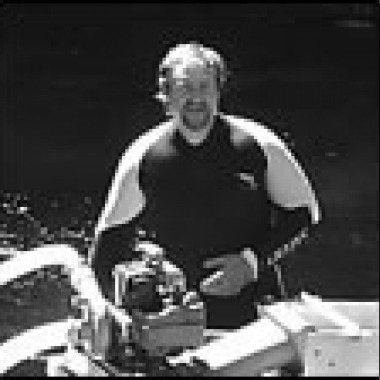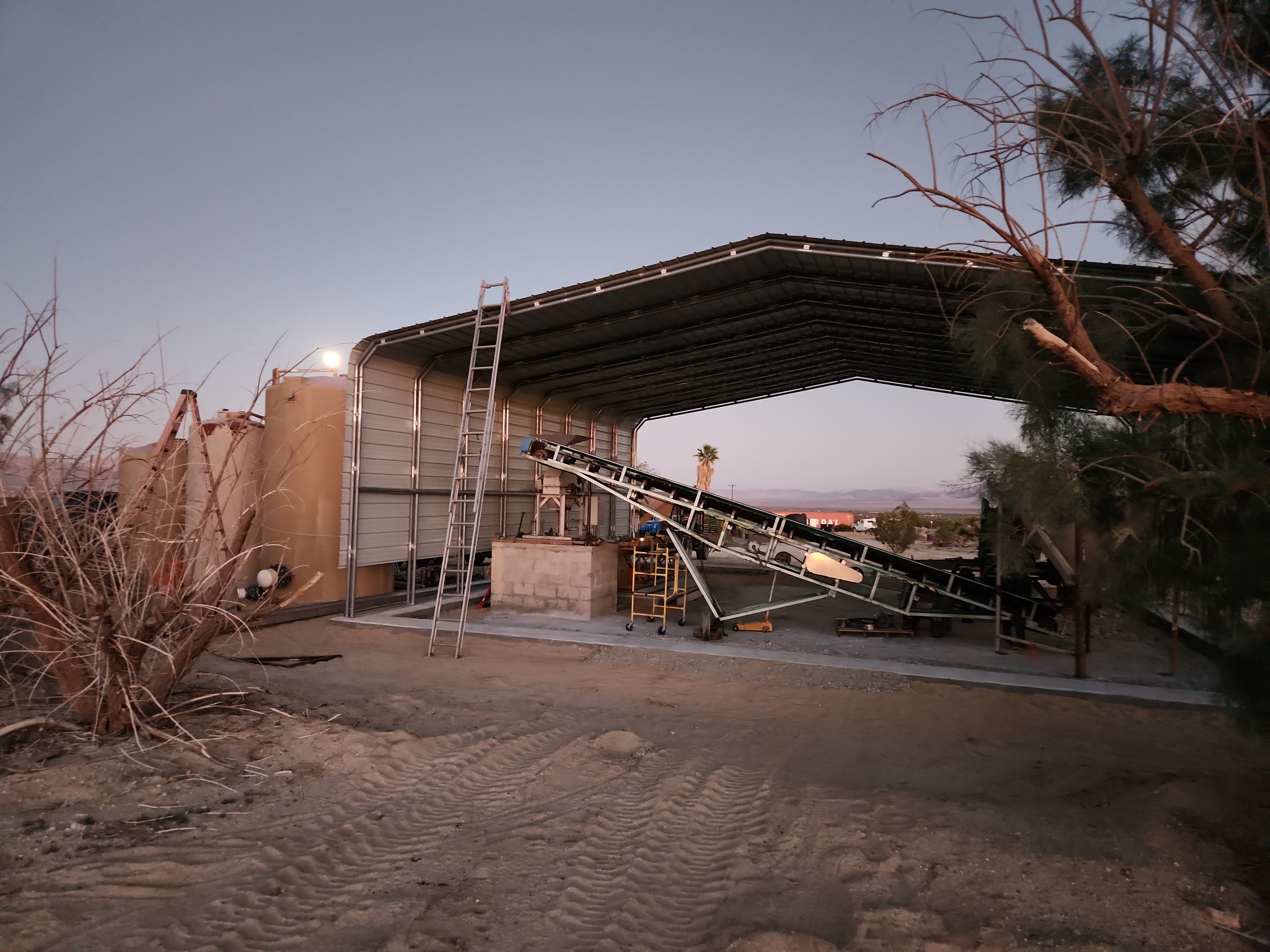Large Scale Mining
Unique Rare Earth Mine in Texas
December 2019 by Chris Ralph
I recently had the pleasure of speaking with Pini Althaus, CEO of USA Rare Earth, a company advancing a new and unique project anticipated to produce a number of different metals. These include the rare earths, but also a number of other critical industrial metals. Because the Mining Journal has an interest in the domestic mining of critical metals, and the geology of this property is so unique, I thought it might be a worthwhile effort to dive in and take a closer look at this potential new mine.
Known as the Round Top deposit, it is located in west Texas, roughly 85 miles southeast of El Paso. The land that would encompass the mine and all related facilities is held under a mining lease agreement with the General Land Office of the State of Texas. The area has been of interest to miners for a number of decades, and was initially explored as a fluorite and beryllium source.
We have published a number of articles on critical minerals and none are more important than rare earths. They are used in many of the high tech devices that we have come to depend on, including strong magnets and catalysts for automotive pollution controls, petroleum refining and advanced weapons systems. China controls the bulk of the world’s supply and has threatened to cut off the US as a weapon in the current trade war. There is no need for a country so rich as ours to be dependent on potentially unfriendly countries for raw materials critical to our survival.
The Round Top mining project consists of an unusual Tertiary rhyolite intrusion that has been enriched in both heavy and light rare earth elements (REEs) and also a number of other elements that are incompatible with the standard minerals that are most abundant in felsic igneous rocks. This means that as a molten magma cools in the earth, these elements just don’t fit into the crystal structures of the typical quartz, feldspars and other common minerals that make up the bulk of the rock. As a result, the last materials to solidify end up concentrating these unusual elements into the final leftover residual material as the magma cools, including also the water and gases that were originally in the magma melt. In some cases, this residual liquid can cool slowly to form pegmatites, but in the case of the Round Top deposit, the residual liquids were injected into the porous rhyolite rocks that form Round Top hill. Here they were close enough to the surface that they cooled quickly, forming tiny crystals, not the giant crystals of a normal pegmatite.
In addition to the rare earth elements, other critical elements that are enriched in the deposit include lithium, beryllium, fluorine, uranium, thorium, niobium, tantalum, zirconium and halfnium. In addition to being very useful industrially, these are the same types of elements that are also typically enriched in pegmatites.
The Round Top rhyolite even displays some other characteristics commonly found in pegmatites, including an abundance of minerals such as cryolite, lithium-rich micas, rutilated quartz and vapor-rich fluid inclusions. Under most circumstances, they would solidify slowly, deep below the surface and develop into coarse crystal pegmatites. It is thought that magma-related fluids here made it up closer to the surface where they cooled comparatively quickly in the rhyolite, resulting in the Round Top deposit. This is why at Round Top these pegmatite-related minerals are found only in the form of tiny crystals.
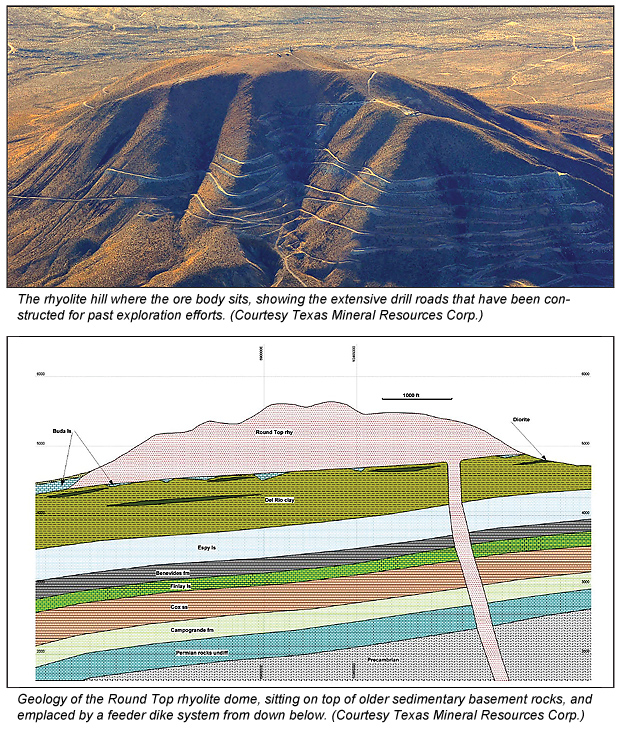 The geologic stratigraphy of the area is relatively simple, with a series of Tertiary rhyolite domes cutting through Tertiary diorite dikes and intruding the surrounding older Cretaceous marine sedimentary rocks. Round Top is thought to be the youngest of this series of intrusive rhyolite bodies. Round Top is a rhyolitic dome that has seen its overlying sedimentary rocks removed by erosion. The rhyolite in the mine area is cut by a set of faults that generally strike northwest and dip steeply to the southwest. The faults on the west side of Round Top show the effects of late-stage hydrothermal mineralization and alteration. The faults are mineralized with fluorite, chalcedony, calcite and clay which replace the angular rhyolite breccia fragments. Calcite, clay and fluorite fill the open spaces within these fault zones and in the adjacent fractured rocks. Similar faults may lie below Round Top and provided the source of the fluids which deposited the metals within the rhyolite.
The geologic stratigraphy of the area is relatively simple, with a series of Tertiary rhyolite domes cutting through Tertiary diorite dikes and intruding the surrounding older Cretaceous marine sedimentary rocks. Round Top is thought to be the youngest of this series of intrusive rhyolite bodies. Round Top is a rhyolitic dome that has seen its overlying sedimentary rocks removed by erosion. The rhyolite in the mine area is cut by a set of faults that generally strike northwest and dip steeply to the southwest. The faults on the west side of Round Top show the effects of late-stage hydrothermal mineralization and alteration. The faults are mineralized with fluorite, chalcedony, calcite and clay which replace the angular rhyolite breccia fragments. Calcite, clay and fluorite fill the open spaces within these fault zones and in the adjacent fractured rocks. Similar faults may lie below Round Top and provided the source of the fluids which deposited the metals within the rhyolite.
The rare earth metals are divided into two groups, the heavy and the light rare earths, with the heavy group being, in general, the rarer and more valuable (though the lighter ones have good value as well). The Round Top rhyolite is enriched more in the heavy rare earths than the lighter ones, with up to 70% of the total rare earths being in the heavy group. The most common rare earth minerals found in the deposit are yttrofluorite, cerfluorite and yttrocerite. All of these are minerals related to fluorite (calcium fluoride) where the rare earths substitute for the calcium in the fluorite crystal lattice.
Active drilling of the deposit, which was first done to assess potential beryllium resources, was started by Cyprus mines in the 1980s. While not all of the information was well preserved, reliable data begins with Cyprus’ 1987 campaign, which consisted of 44 identifiable reverse circulation (RC) holes and two diamond core holes. The current property holder drilled an additional 64 RC holes in 2011, and in 2012, an additional 16 RC holes and two diamond core holes were completed. This more recent campaign was designed to 1) define the extent of the Round Top rhyolite; 2) validate historical drill data results; and 3) provide sample support for the geologic and resource models. The current operators have also done stream sediment sampling and various geophysical surveys on the property, including radiometric, magnetic and gravimetric measurements.
The overall grades of the rare earth metals at Round Top are significant, but not tremendously high. Head grade analyses of composite samples ranged from 0.029% to 0.031% in total rare earth element metal content. The values of some of these metals can be quite high, reaching into the hundreds of dollars per pound for some. Other metals are similar in the parts-per-million (ppm) levels that are present in the rock. These elements have the potential to add significantly to the economics of the project. Only lithium is present in higher levels, with the raw ore being about 0.1 percent lithium. The grades of the deposit are remarkably consistent throughout the very large deposit. As the deposit is exposed on the top of a hill, the stripping ratio for mining would be very low and little waste would need to be mined to provide access to the ore.
Even more than the unusual geology and the odd conjunction of so many critical metals all in one spot is what may make this deposit economic to mine. Testing has shown this deposit to be more interesting from a mining standpoint because the minerals that contain the rare earth and other critical metals can be leached out of the rock by dilute sulfuric acid solutions. This includes the lithium that is found in the rhyolite. This gives the miner an option of low-cost heap leach recovery systems to extract the metal values. Actually, a number of the contained critical metals found in the Round Top deposit can be at least partially extracted this way in addition to the lithium and rare earths. Recovery from the leach solutions would be done using various ion-exchange resins designed to be selective to the different metals.
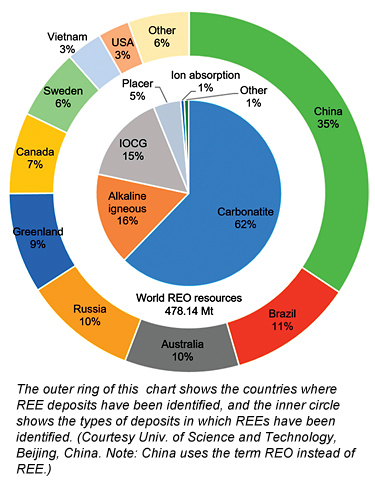 Bench-scale testing in a lab has already been completed for the susceptibility of the ore to leaching, and the testing showed promising results, but larger-scale testing would be needed before full-scale commercial mining could commence. A pilot-scale plant is projected for the not too distant future to further test the metallurgy and refine the recovery methods for processing the rock from the deposit. In addition to the rare earths, Round Top could also become a very large lithium producer because the leaching process would also recover that metal. The pilot testing plant is projected to come online sometime around the 4th quarter of 2020. In fact, a total of 27 materials, including 16 rare earth and related metals, 6 technology metals, 6 industrial sulfates, plus tin and niobium are contained in the rhyolite and are at least in part extracted in the proposed acid leaching process. Working out a precise and optimized flow sheet for the recovery of all these metals under pilot-scale testing may take some work, but does not seem impossibly difficult.
Bench-scale testing in a lab has already been completed for the susceptibility of the ore to leaching, and the testing showed promising results, but larger-scale testing would be needed before full-scale commercial mining could commence. A pilot-scale plant is projected for the not too distant future to further test the metallurgy and refine the recovery methods for processing the rock from the deposit. In addition to the rare earths, Round Top could also become a very large lithium producer because the leaching process would also recover that metal. The pilot testing plant is projected to come online sometime around the 4th quarter of 2020. In fact, a total of 27 materials, including 16 rare earth and related metals, 6 technology metals, 6 industrial sulfates, plus tin and niobium are contained in the rhyolite and are at least in part extracted in the proposed acid leaching process. Working out a precise and optimized flow sheet for the recovery of all these metals under pilot-scale testing may take some work, but does not seem impossibly difficult.
The recent economic evaluation of the property was done based on the mining of 20,000 metric tons of ore per day. Typical open pit mining methods would be used. The treatment, extraction and refining costs were figured to produce a salable product for each of the different products the mine is likely to produce. With all the operating costs figured in, the preliminary economic assessment showed that mining Round Top would have the potential to be quite profitable. The estimated resource is very large and contains sufficient material to operate for far beyond the 20 years addressed in the preliminary economic assessment. The defined initial pit and mining plan addresses the first 22 years of production, but with such a huge resource there is the potential for increasing production and revenues.
One of the most interesting things about Round Top is that it may represent a new class of deposit that prospectors might search for. Rhyolite domes are not terribly rare, but the valuable minerals in this type of deposit are not easily visible to the eye, and most domes are not mineralized. The few mineralized domes out there would easily be overlooked. Similar deposits may be awaiting discovery, hiding in plain view because the valuable minerals are not obvious.
Round Top was first explored for fluorite and then beryllium. It does bear some similarity to the Spor Mountain beryllium deposit in Utah, as that deposit is also hosted by rhyolite and associated with fluorite and has at least some of the other associated metals found at Round Top. Still, I could find nothing about the possible presence of any rare earths at Spor Mountain.
A lithium-rich dome is currently being prepared for mining at Rhyolite Ridge in central Nevada. Again, I could find no data on other associated metals at Rhyolite Ridge, but that does not mean they are not there—just that there is no information.
Exploration for and prospecting in search of similar deposits should focus on rhyolite bodies located in fluorite-bearing areas. Indicators for mineralized rhyolite would be fluorine in amounts of about one percent or greater and some combination of elevated lithium, beryllium, lead, zinc, arsenic or uranium. The elevated fluorine levels seem to be an essential part of the mineralization process.
It’s likely that these deposits—if there are a number of them out there—will vary in content of accessory metals from location to location and not all will be rich enough to work. I will keep an eye out to the geologic literature and if any research comes out that describes these deposits in terms that would help prospectors and exploration geologists identify them, I’ll be sure to discuss it here in the Prospecting and Mining Journal. These truly are unusual deposits and the study of them really would be cutting edge exploration geology.
_______________
Previous ICMJ articles on rare earth metals:
- “Prospecting for Rare Earth Metals,” January 2010 issue, by Chris Ralph.
- “US Rare Earths: We Have & We Have Not,” August 2017 issue, by Don Fife.
- “The Importance Of Mining Critical Minerals In The USA,” March 2019 issue, by Chris Ralph.
- “Rare Earths: Don’t Say We Didn’t Warn You!” see “Recent News” section of www.icmj.com, May 31, 2019, by Scott Harn.

EPA Recommends Against Reissuing Permit for PolyMet Mine
PolyMet contends the project will actually reduce mercury and sulfate discharges into the St. Louis River watershed because it will clean up an old iron mining waste pond at the processing plant site.
Proposed Nebraska Mine Has Sizeable Deposit of Rare Elements
… the latest analysis shows the amount of rare earth elements present ... is the second largest deposit in the United States.
Xmet Aims for One Million Ounces
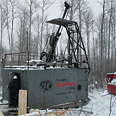 The beautiful province of Quebec, known in French as “La Belle Province,” is not only famous for its scenic attractions and world-renowned cities such as Montreal and Quebec City, but also as being one of the most attractive places for mining...
The beautiful province of Quebec, known in French as “La Belle Province,” is not only famous for its scenic attractions and world-renowned cities such as Montreal and Quebec City, but also as being one of the most attractive places for mining...
The Struggle to Reopen Alaska's Largest Gold Mine
The historical AJ mine, located east of Juneau, Alaska, was considered the largest gold mine in the state at one time. Joe Juneau and Richard Harris struck gold there in 1880, and it has been more recently known as a tourist destination.
Critical Minerals Update
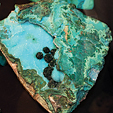 The critical metals are essential to the modern lives we lead. The prices of critical metals are moving up even faster than government published rates of inflation, with little sign of slowing down.
The critical metals are essential to the modern lives we lead. The prices of critical metals are moving up even faster than government published rates of inflation, with little sign of slowing down.
An Update On The Father's Day Gold Discovery
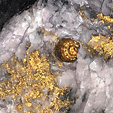 Just recently, the miners hit another big pocket, this time with nearly 1,000 ounces of gold. Some of the rich specimens were as big as a fist and others were in the form of smaller pieces.
Just recently, the miners hit another big pocket, this time with nearly 1,000 ounces of gold. Some of the rich specimens were as big as a fist and others were in the form of smaller pieces.
Subscription Required:
The Bawl Mill
• Ask The Experts - How do I obtain a map of Montana gold & sapphire gravel bars?
• Ask The Experts - How do I process this white quartz with black striations?
• Ask The Experts - Does gravel + bedrock = gold?
• Back to Green Valley--With A Sluice
• A Lesson In Underwater Sniping
• More Fiddling While Forests Burn
• Achieving Accurate Metal Detector Discrimination
• My New Passion--Crystal Hunting
• The Half-Mile Claim
• Melman on Gold & Silver
• Mining Stock Quotes and Mineral & Metal Prices
• Gold Prospecting for Better or Worse: White Knuckle Mining
Free:
Legislative and Regulatory Update
• Gold in The Midwest--Part I
• PLP Update: Another Suction Dredge Case Heading to the US Supreme Court

